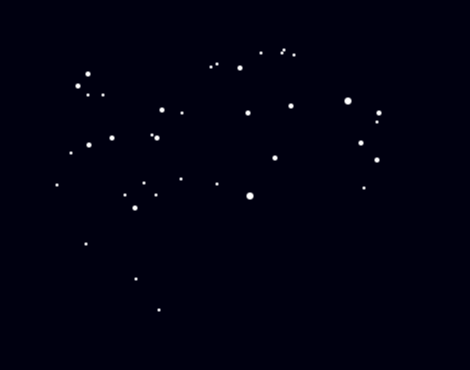Instructions
- hover your mouse over the constellation in the upper night image
- click on the constellation to go to the link with the description


Ursa Minor
(Latin: "Lesser Bear", contrasting with Ursa Major), also known as the Little Bear, is a constellation in the Northern Sky. Like the Great Bear, the tail of the Little Bear may also be seen as the handle of a ladle, hence the North American name, Little Dipper: seven stars with four in its bowl like its partner the Big Dipper. It was one of the 48 constellations listed by the 2nd-century astronomer Ptolemy, and remains one of the 88 modern constellations (like all of constellations listed here).
Ursa Minor has traditionally been important for navigation, particularly by mariners, because of Polaris being the north pole star.
Draco
Draco is a constellation in the far northern sky. Its name is Latin for dragon. The north pole of the ecliptic is in Draco. Draco is circumpolar (that is, never setting), and can be seen all year from northern latitudes.
There are three stars under magnitude 3 in Draco. Draco is home to several double stars and binary stars. There are several faint galaxies in Draco.
Cepheus
Cepheus is a constellation in the northern sky, named after Cepheus, a king of Aethiopia in Greek mythology.
The constellation's brightest star is Alpha Cephei, with an apparent magnitude of 2.5. Delta Cephei is the prototype of an important class of star known as a Cepheid variable. RW Cephei, an orange hypergiant, together with the other existing red supergiants are among the largest stars known. Cepheus also has the hyperluminous quasar S5 0014+81, which hosts an ultramassive black hole in its core, reported at 40 billion solar masses, about 10,000 times more massive than the central black hole of the Milky Way.
Cassiopeia
Is a constellation in the northern sky, named after the vain queen Cassiopeia in Greek mythology, who boasted about her unrivaled beauty.
Cassiopeia is located in the northern sky and from latitudes above 34°N it is visible year-round. In the (sub)tropics it can be seen at its clearest from September to early November, and at low southern, tropical, latitudes of less than 25°S it can be seen, seasonally, low in the North.
